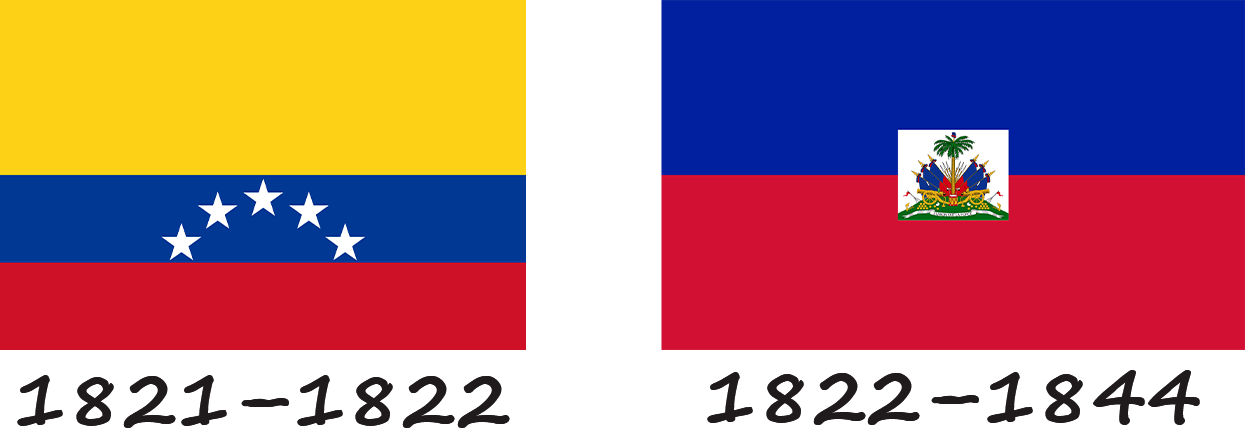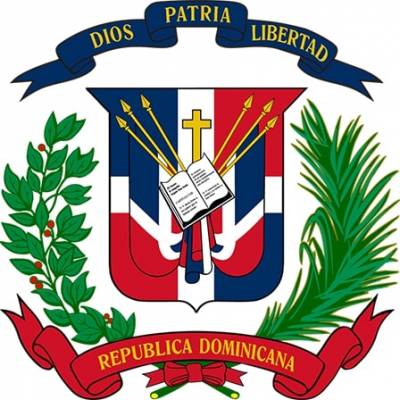The flag of the Dominican Republic consists of a white cross, symbolizing salvation, and four rectangles of red and blue, commemorating the War of Independence in 1844. This war allowed the Dominican Republic to become independent from Haiti. José Joaquín Puello, the flag's designer, is a national hero because of his participation in this war. He was a colonel in the Haitian army and refused to participate in a conspiracy to change the government. Haiti and the Dominican Republic used to belong to Spain, but together they became independent countries. The island of Hispaniola, where these countries are located, has been a colony of Spain since 1492 and is the second largest island in the Caribbean.

In 1821, the small colony of Santo Domingo became the Republic of Spanish Haiti and adopted the yellow, blue, and red horizontal tricolor with five five-pointed stars in the center of the flag. The Republic lasted only until early 1822, when the territory became part of a united Spain under Haitian rule and began using the Haitian flag, two stripes of blue and red with the coat of arms in the center. The Dominican Republic, an island country on the Española, was colonized by the Spanish thanks to sugar plantations that employed slaves from West Africa. The climate is ideal for growing sugar cane, but the country is also prone to hurricanes. The Taino people, the indigenous inhabitants of the island, were friendly to Columbus and his expedition, which helped him to establish the first colonies. The Dominican Republic is a very popular tourist destination, thanks to its beautiful beaches and landscapes. About five million tourists visit the country every year, which is a huge boost for its economy. You can play golf and hold weddings here. Besides, the country has tropical forests and the highest mountain in the Caribbean. Since the colonial era, the Dominican Republic has been developing as a prosperous country that is proud of its heritage and beauty.





